For those of us who live in urban areas or apartments, growing our own food in a sprawling garden is a distant dream. However, living in a small space does not mean that you cannot grow at least some of your own food. There are many types of edible plants that grow well indoors.
Disclaimer: Although the title of this article is “10 Edible Plants That Are Easy To Grow Indoors”, keep in mind that growing plants may be easier or more difficult depending on the amount of natural light in your home. If you live in a house or apartment with no south-facing windows or very little natural light, I strongly recommend investing in some grow lights (which don’t have to be expensive) before you waste your money and time trying to grow these plants indoors.
1. Microgreens
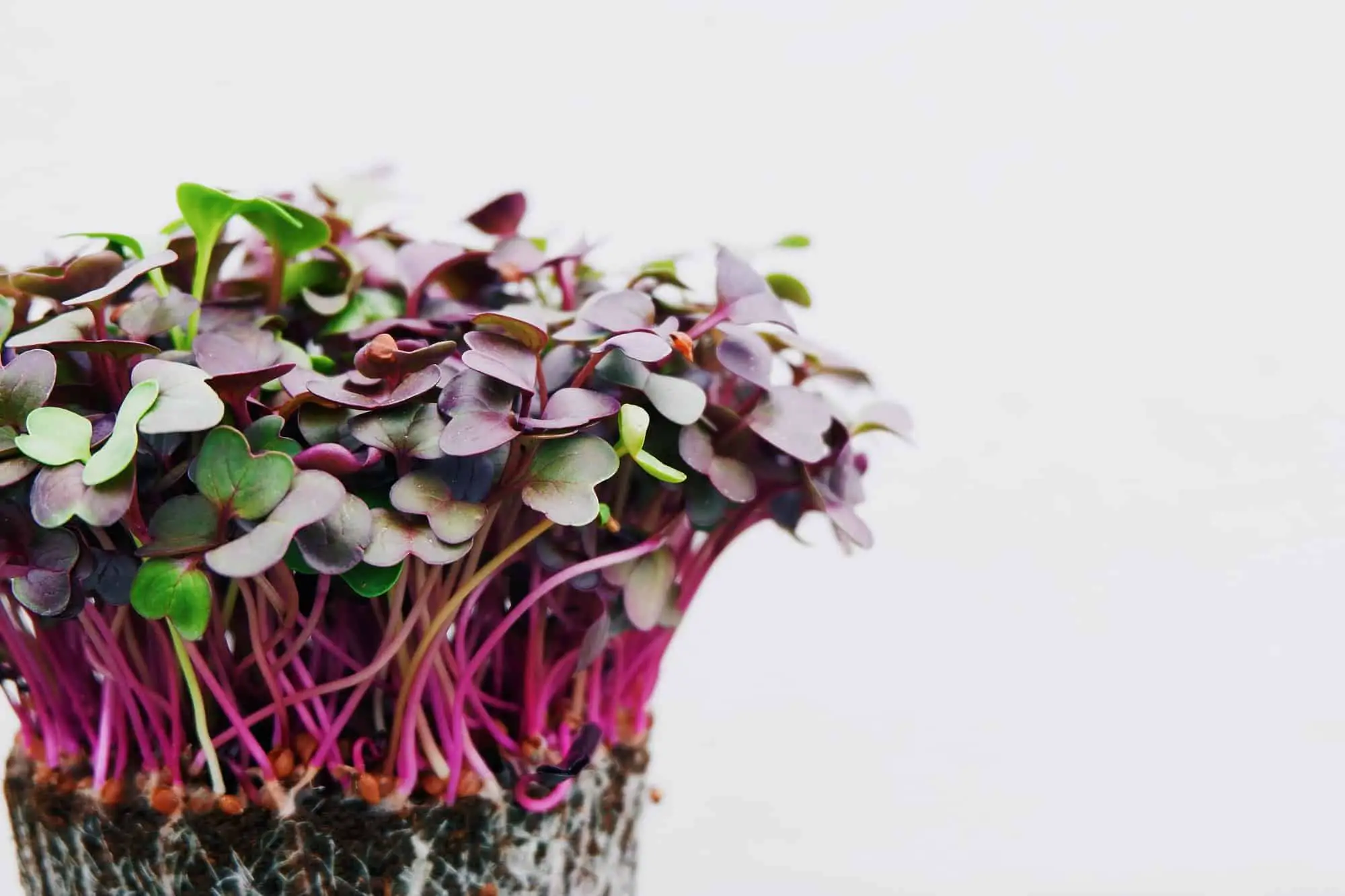
Microgreens, which are leafy vegetables harvested after the cotyledon leaves have formed, are my favorite plants to grow indoors. Depending on the variety, they are easy to grow and are ready to harvest within one to two weeks of sowing the seeds! In addition, microgreens are extremely nutritious and are packed with flavor.
Although microgreens are expensive in the store, these plants do not require very much equipment to grow at home. All you need is a growing tray, a growing medium (e.g., soil, hemp growing mat, coco coir), and seeds. You do not have to use the “standard” growing trays that the professionals use to grow microgreens. To make growing microgreens even more budget-friendly, you can use takeout containers, plastic Tupperware, or other creative containers.

Microgreens growing in standard growing trays 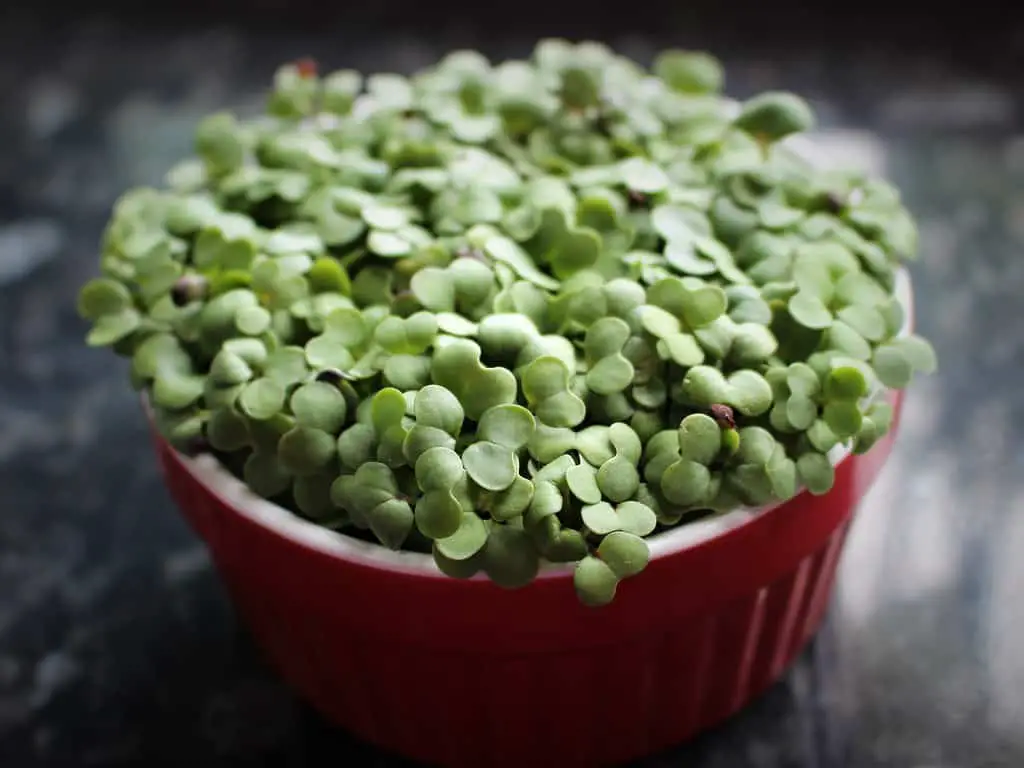
Microgreens growing in a pot
There are many types of microgreens that you can grow for different culinary purposes. To learn more about different types of microgreens, check out my article that lists 101 types of microgreens. However, not all types of microgreens are suitable for beginners. The best microgreens for beginners to grow are radish microgreens, sunflower microgreens, and pea microgreens.
To learn more about growing microgreens, check out my ultimate guide to growing microgreens.
2. Onions and Garlic
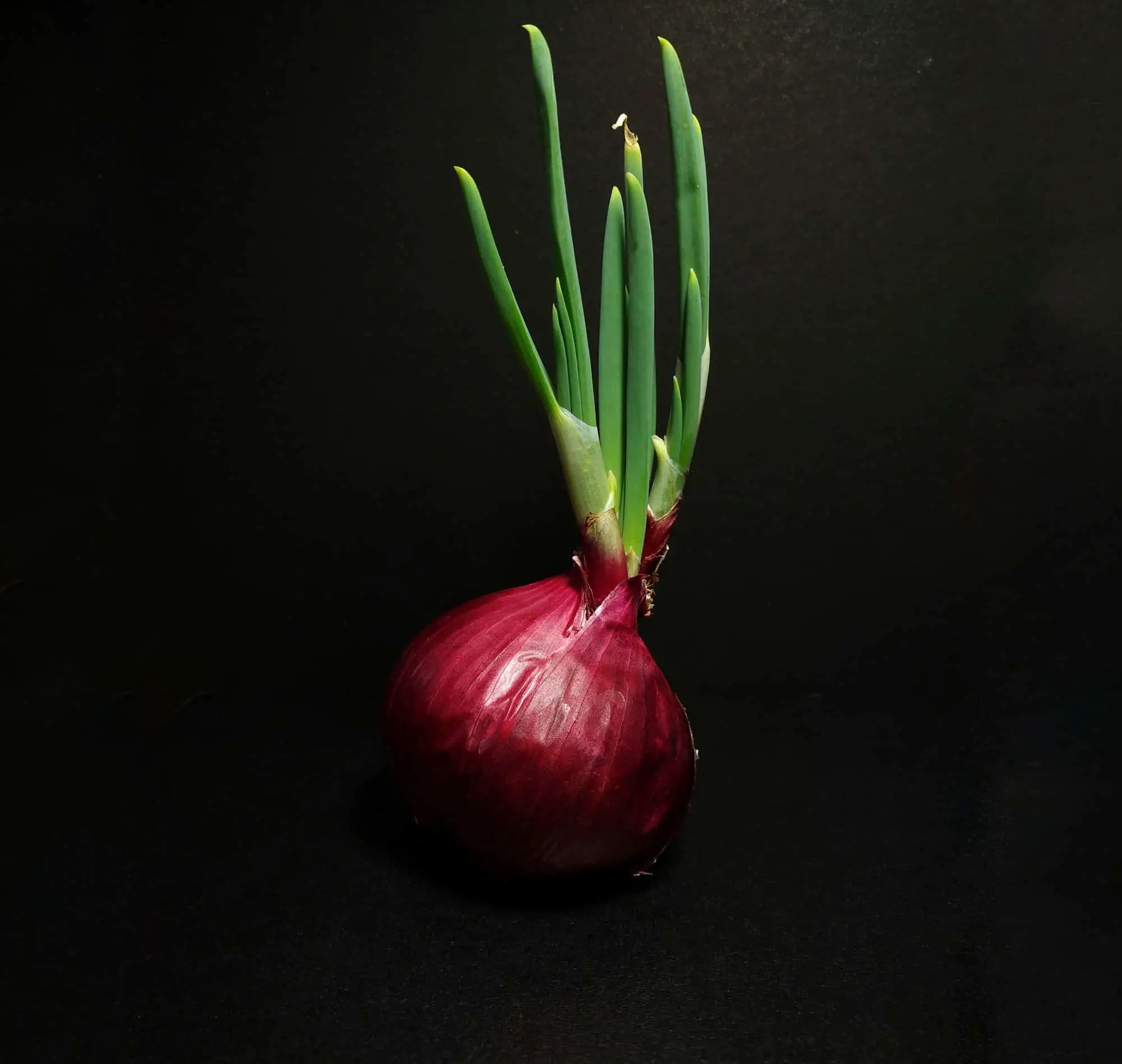
Onions are cool weather vegetables that are typically grown in a garden, but they can also grow indoors. To grow onions indoors, you will need a container that is large enough for a few onion bulbs, well-draining soil, and a sunny location for the onions.
In my opinion, the best way to grow onions is to divide a sprouted onion so that you can grow more onions quickly (as compared to growing onions from seed). You can also grow more garlic from sprouted garlic. For more details on how to use a sprouted onion to grow more onions, check out this article I wrote on what to do with sprouted onions.
Finally, you can also grow green onions from your green onion scraps. Simply drop the leftover onion roots and drop them in a glass of water making sure that the roots are completely submerged. Then set the glass by a sunny window. After a week or two, you will have more green onions!
If you are growing green onions in water, I highly recommend changing the water every day. Otherwise, your home can start to smell like onions.
3. Herbs
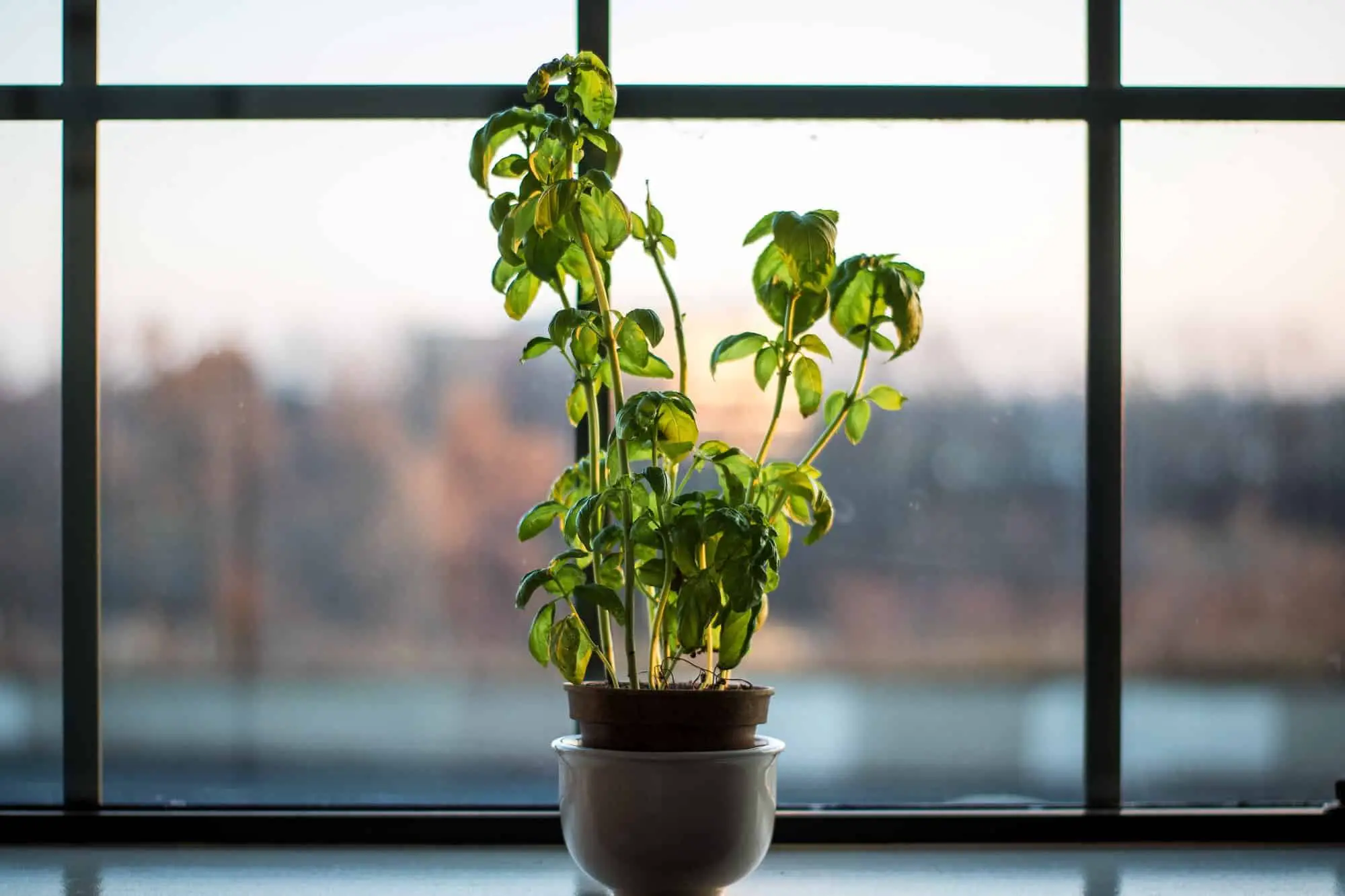
In my experience, the easiest herbs to grow indoors are mint, rosemary, and basil. Many other people have good luck growing chives, dill, oregano, parsley, sage, and rosemary indoors. Typically, you will find these herbs sold at gardening centers and big box stores during the spring and summer. However, you can also find rosemary Christmas trees during the months of November and December.
Herbs need at least 6-8 hours of light each day. If you cannot put your herbs on a sunny window sill, you probably need to purchase some artificial grow lights. It may also be a good idea to supplement natural light with grow lights during the winter time, especially if live in a place that does not get very much sun during the winter.
Like most plants, herbs like well-draining soil. However, herbs such as mint and basil grow more quickly in hydroponic systems. Hydroponics is a method that involves growing plants in water filled with dissolved nutrients. There are a number of benefits to growing herbs hydroponically. For example, hydroponic systems are not as messy, and hydroponic plants grow 25-50% faster than those grown with conventional methods. I have also found that herbs grown hydroponically tend to have a more intense flavor as well. The biggest drawback to hydroponics is that plants will die quickly if anything goes wrong.
To learn more about growing herbs in a passive hydroponics system, check out these articles that I wrote:
4. Mushrooms
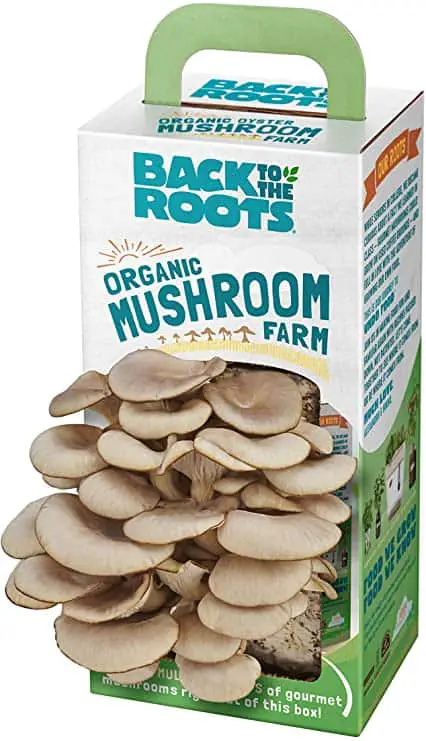
Unlike the other crops on this list, mushrooms do not require light to grow. In fact, they grow best in a dark, humid environment. Although it is definitely possible to build your own mushroom growing area, it might be easier for beginners to start with a mushroom growing kit like the one shown above.
Because mushrooms are fungi, the growing process is a little different than the other plants on this list. For example, fungi are grown with spores (which can be thought of as fungus seeds) or spawn (which can be thought of as fungus starts). Mushroom are typically grown in substrates such as coffee grounds, sawdust, or wood shavings.
The easiest types of mushrooms to grow at home include oyster, white button, and Shiitake. Each type of mushroom requires slightly different growing conditions. For example, oyster mushrooms grow best in straw or coffee grounds while Shitake mushrooms will grow best in hardwood sawdust. It usually takes 3-4 weeks for mushrooms to grow.
5. Ginger
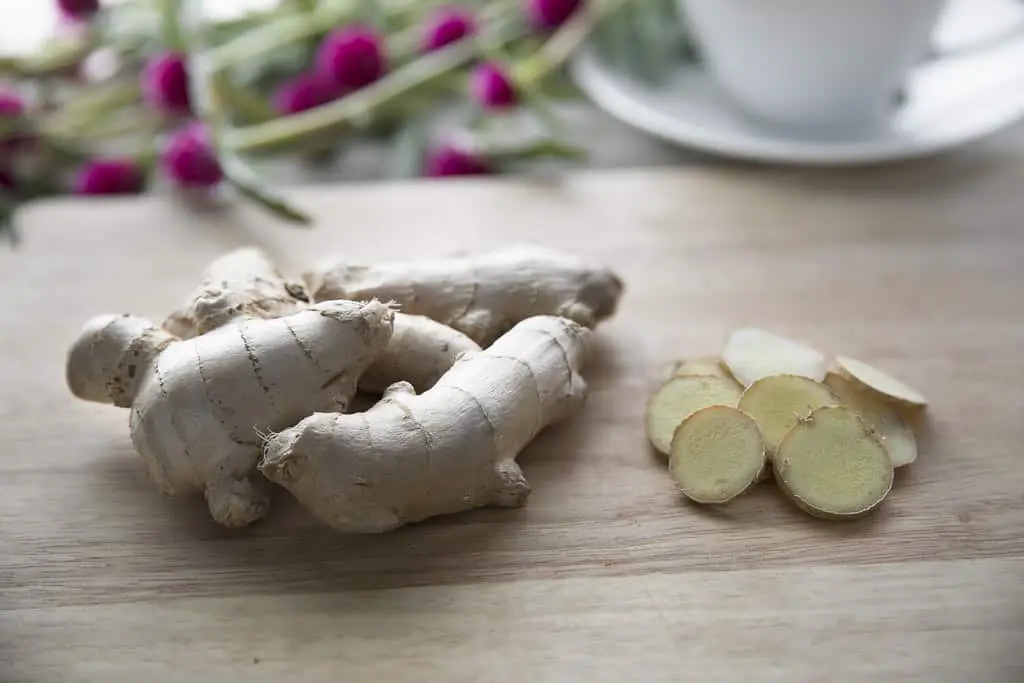
Like onions and garlic, you can easily grow ginger indoors from food scraps. Ginger is a common ingredient in Asian dishes, teas, and health drinks. Although ginger is commonly referred to as ginger root, the ginger you purchase at the store is actually a rhizome. A rhizome is actually an underground stem from which shoots and roots grow.
To grow fresh ginger from store-bought ginger, start with a plump piece of ginger. Ideally, it should have nodes that look like they may sprout. Soak the ginger in warm water overnight. Then plant the piece of ginger in a shallow, wide pot (rhizomes like to grow laterally). Keep the soil moist, and you should see shoots popping up from the soil in a couple of weeks. After a couple of months, you can harvest a bit of fresh ginger from your ginger plant.

6. Chili Peppers
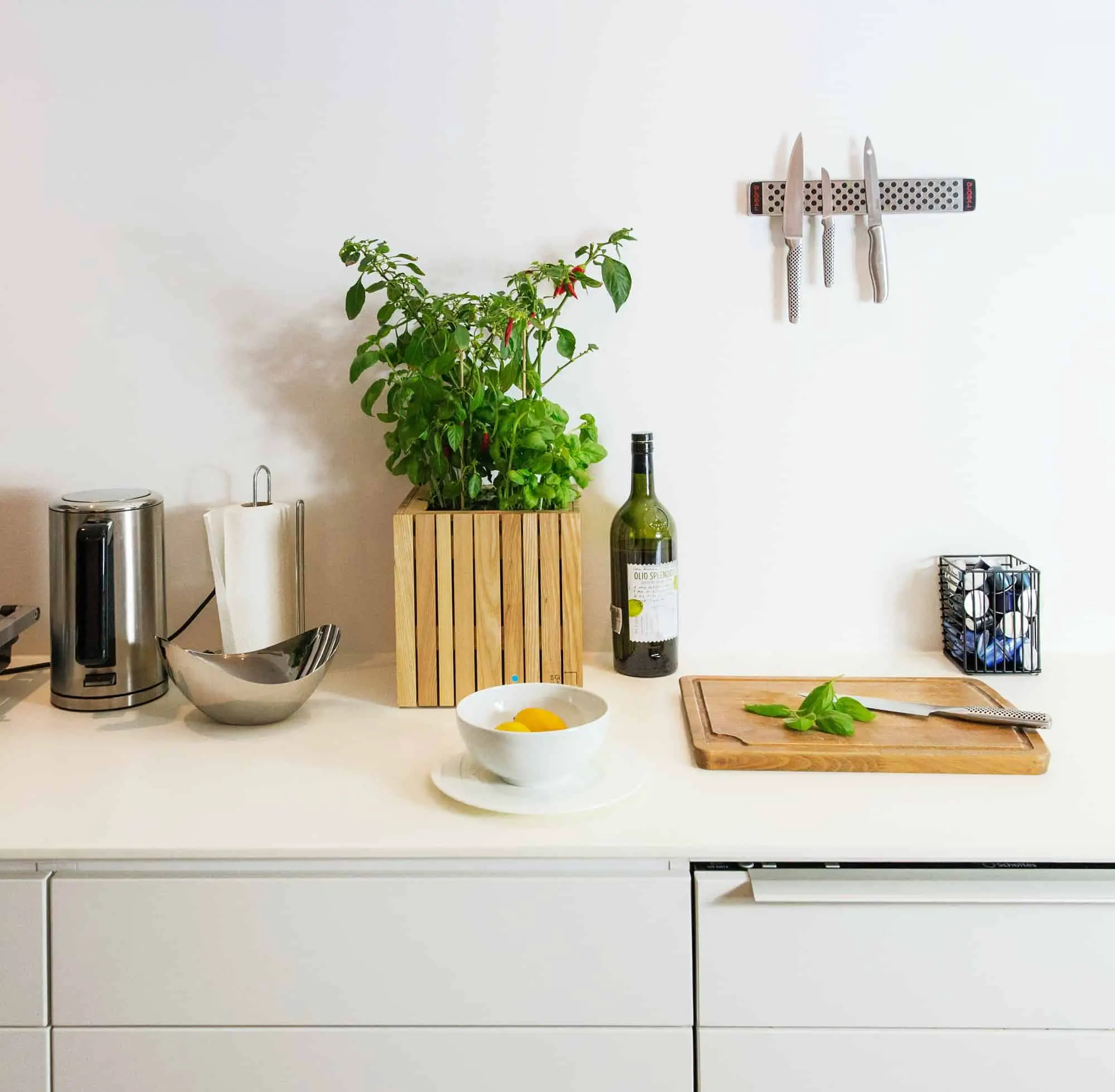
Chili peppers’ vibrant colors and flavors make them a great addition to any indoor garden. However, not every type of chili pepper can be easily grown inside. Smaller plants, such as the one shown in the picture, grow best indoors because they do not require as much space. According to the Brooklyn Botanic Garden, some chile varieties that grow well indoors are piqu’ns, chiltepins, habaneros, and Thai peppers.
Chili peppers like warm temperatures and exposure to a lot of sunlight. If your chili plant has narrow stems, it is probably not getting enough light.
Chili peppers do not need as much water as some of the other plants on this list. Allow the soil to dry out between waterings. When you do water, add water until the soil is slightly moist.
Fertilize your chili plant every couple of weeks with Miracle Gro All-Purpose Fertilizer. If you start seeing salt deposits on the soil surface or on the chili peppers’ pot, you are overfertilizing and should flush the soil with water.
7. Kale
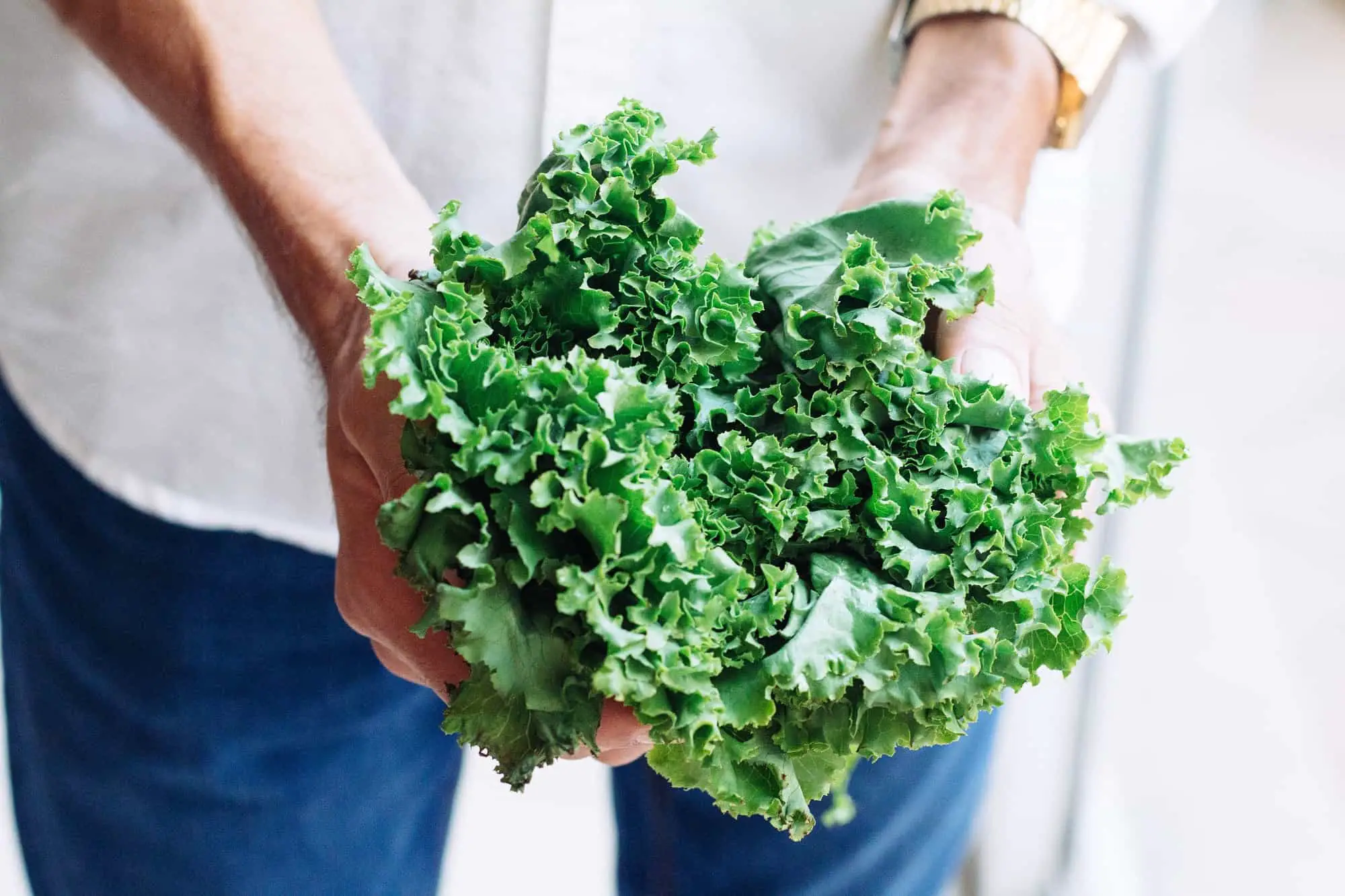
Along with other leafy greens, kale is a great vegetable to grow indoors. Although these plants need a lot of light, they do not take up very much space. It takes about two months to grow kale indoors. If you do not want to wait that long, you can grow kale microgreens, which are ready to harvest within a couple of weeks of sowing seeds.
You can grow any type of kale indoors, but dwarf varieties, such as Dwarf Blue Curled, tend to do best in an indoor environment. Like most of the vegetables on this list, these plants grow best when placed next to a south-facing window. If that is not possible, consider using grow lights.
These plants like cooler temperatures, so they will do better than other types of vegetables on a colder windowsill in the wintertime. Kale prefers daytime temperatures between 60°F and 65°F. Some varieties of kale will actually taste better if they are exposed to a frost or two.
Water your kale regularly. Moist soil will help keep the leaves sweet and crisp rather than tough and bitter.
8. Dwarf Kaffir Lime Tree

Citrus hystrix, which is commonly referred to as Kaffir lime or Thai lime, is a citrus plant that is native to Southeast Asia and southern China. Its leaves are a common ingredient in Thai food (e.g., panang curry, tom yum soup). When crushed, they release their fragrant oils and give food a soapy, citrusy flavor.
If you enjoy cooking Thai food, growing a dwarf Kaffir lime tree indoors would be useful because it can be difficult to find Kaffir lime leaves at grocery stores. I have only been able to find them at Asian markets. Dwarf Kaffir lime trees grow to a height of about 5 feet.
If you choose to grow a Kaffir lime tree indoors, make sure you place it next to a sunny window. These trees need full sunlight for 6 to 8 hours per day. Allow the top two inches of soil to dry out between waterings. Harvesting some leaves every few weeks will encourage the tree to grow.
NOTE: The term “Kaffir” was originally used to refer to non-Muslims. However, it was later adopted as a slang word in South Africa for people of color. Please know the use of the word “Kaffir” in this article was not intended to offend anyone and is only referring to the tree as it is commonly known in North America.
9. Tomatoes

Dwarf or mini varieties are the best tomatoes to grow indoors. Because small tomatoes have less skin to ripen, they will ripen more quickly than larger tomatoes. This is helpful when growing tomatoes indoors where there is less light.
Tomatoes need to receive full sun for at least eight hours a day in order to fruit. Ideally, they should be placed next to a south-facing window or in a window box. If you do not have access to full sunlight, your tomatoes should be exposed to artificial grow lights for 12-16 hours per day.
Indoor tomatoes grow best when the air temperature is between 65-85ºF. If your home is drafty, consider putting your tomatoes on a seedling heat mat to keep them warm.
Many people have successfully grown tomatoes indoors with passive hydroponic systems. Hydroponics involves growing plants in a nutrient solution rather than in soil. Passive hydroponics systems do not require electricity or pumps.
Putting together your own hydroponics system is a bit more difficult than simply planting your tomatoes in soil, but your tomatoes will grow more quickly once your system is set up. The video below explains how to build a hydroponics system for tomatoes.
10. Strawberries
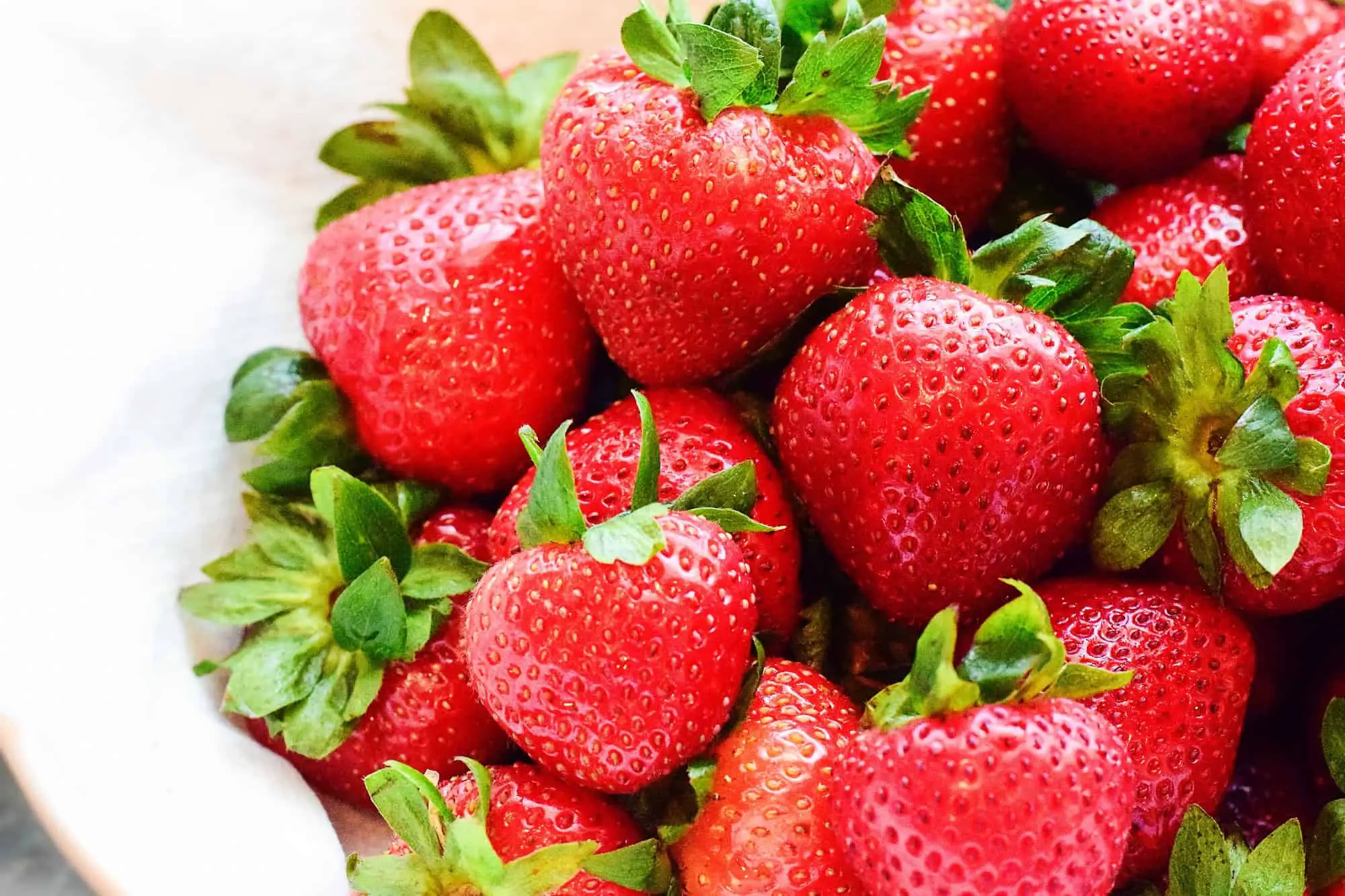
It is also possible to grow strawberries indoors with the proper lighting and soil conditions. It is best to grow day neutral strawberry varieties such as the Alpine strawberries. Alpine strawberries produce smaller fruit that are renowned for their delicate, sweet flavor. They are expensive for commercial growers to produce, so you will not find them at the grocery store very often.
Strawberries need a lot of light. They grow in direct sunlight even during the summer months. If you cannot put strawberries next to a south-facing window, consider using artificial lighting to supplement the natural light.
When you are growing berries outdoors, you do not need to worry about pollination. However, indoor berries need to be hand pollinated. Strawberries are hermaphrodites because each plant contains the male and female parts required for them to flower. To pollinate a strawberry, use a small brush to transfer the pollen from the stamen to the pistil of each flower. This process is shown in the video below.
Strawberries can be grown in soil or hydroponically. If you are growing strawberries in soil, allow the top one inch of soil to completely dry between waterings. Check your strawberry plant frequently (every day or every other day) to see if it need water.
